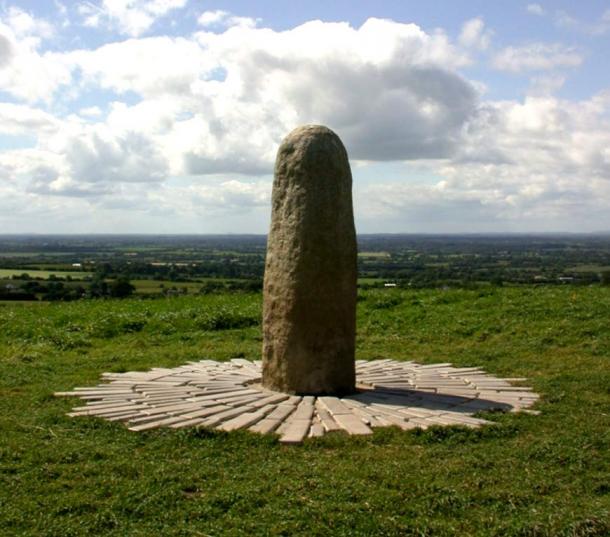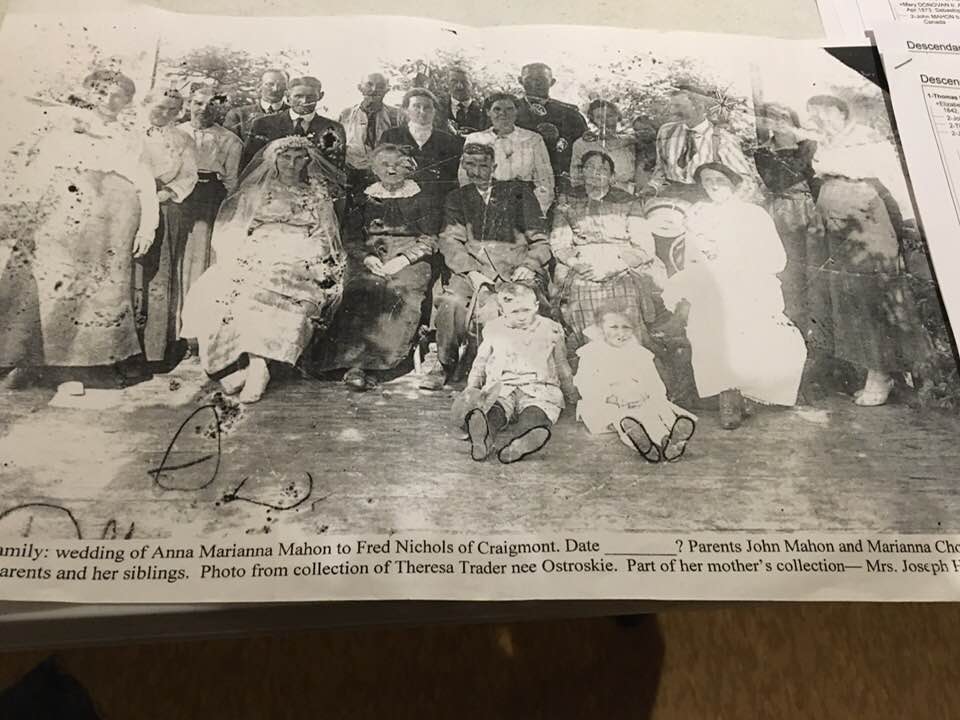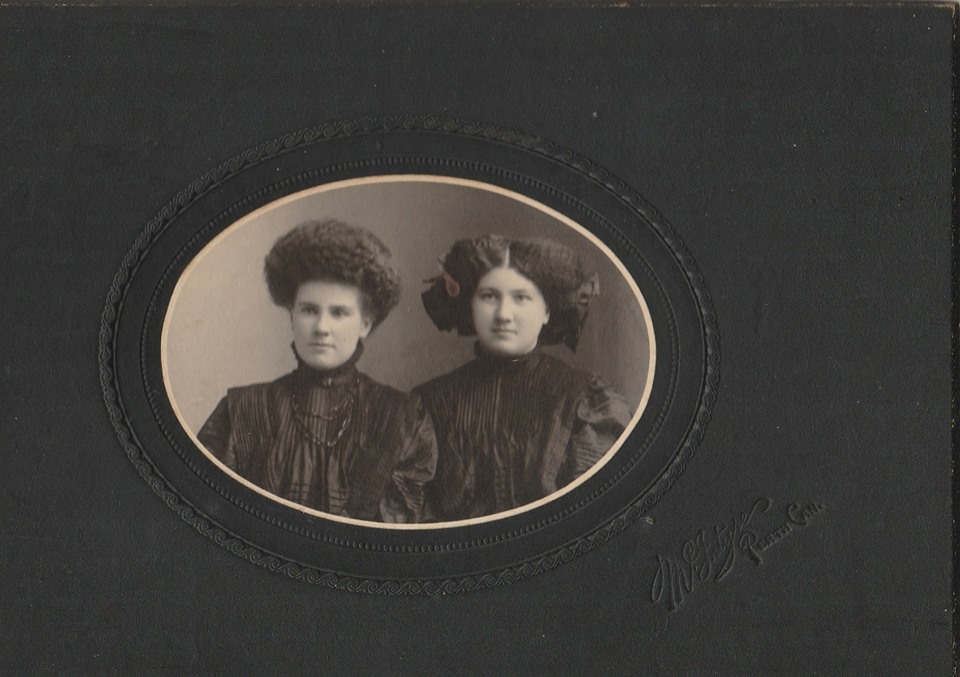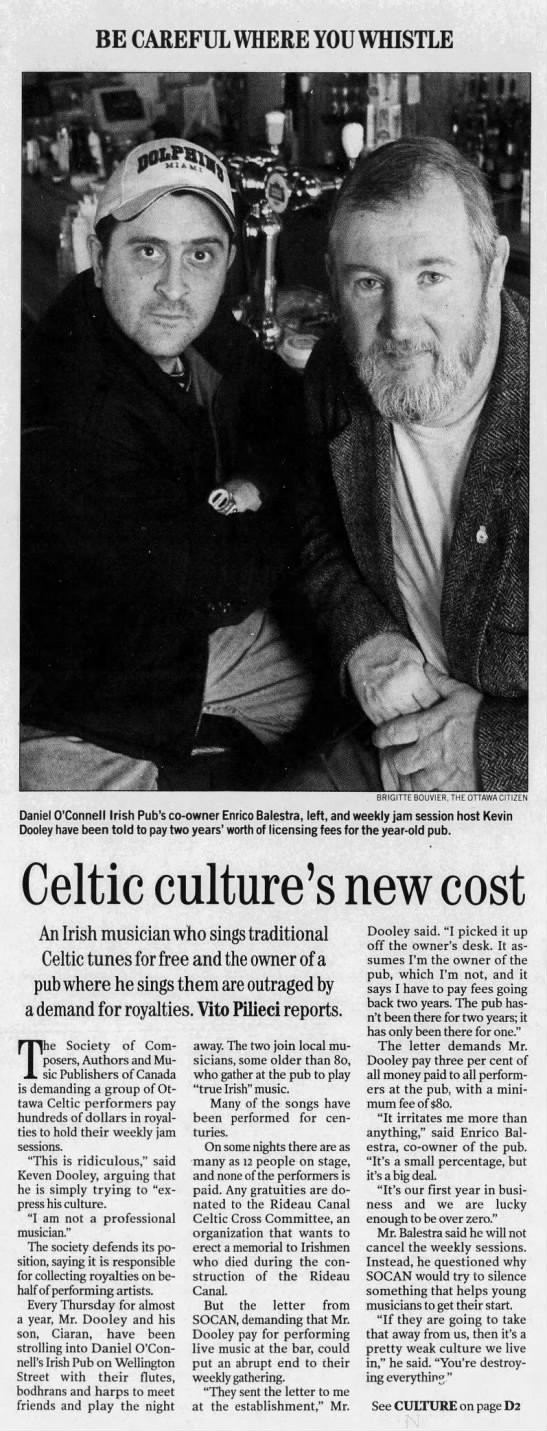

Celtic Historian Kevin Dooley click here

The Lia Fáil (Stone of Destiny) atop the Hill of Tara, County Meath, Ireland.
Celtic Historian Kevin Dooley came to the reunion to tell the Mahon families what their ancestors went through. He also told us a few settlements in Ireland were older than Sonehenge carvings in the Irish stones —older than the pyramids. When ancient Egypt and Ireland are spoken about in the same breath it usually results in the rolling of eyes, polite exits and the sound of murmurs citing pseudo-history and new age babble. At least, that used to be the case.
Recent discoveries in DNA research have added to already verified archaeological finds to present a scenario that is now more difficult to dismiss.

Photo-Dublin to Drummond 200th Mahon Family Reunion
The Hill of Tara is one of Ireland’s most ancient sacred sites. It is surrounded by many other Neolithic earthworks and tombs and although commonly associated with the Celts, the site pre-dates their arrival in Ireland by thousands of years.
In legend it is the place where the Tuatha De Danann reigned. These were a God-like people who were said to have arrived in Ireland in mysterious ships and had magical powers. Read more here..


Here we have a portrait of Mary and Evelyn Mahon, daughters of John and Bridget Mahon, taken in the early 1900’s.
Irish Immigration
The Mahon family is one of the oldest families that immigrated from the centre of Ireland and James Mahon’s small farm was located just outside of town. They were also a clan and had lands and had trades.
This stage of Irish-Canadian immigration history gathered momentum in the 1760s when advertisements appeared in Ireland’s Ulster province offering “industrious farmers and useful mechanics” the opportunity to emigrate to British North America (as Canada was then known) with the promise of at least 200 acres of land per household.
Some 300 new settlers took up the challenge, arriving in Halifax, and the following year they were joined by 170 immigrants who sailed from Londonderry and settled the New Dublin area.
Another sizeable group of Irish immigrants arrived in 1823-1825. Mainly Catholic paupers from counties Clare, Cork and Limerick, they created a 2000-strong settlement in Peterborough, Ontario (named after Peter Robinson who commissioned the twelve ships that carried them).
Each household was given a cow, basic implements and three bushels of seed potato to get them started on a new life.
This, too, was successful, and was followed by several years of active emigration, principally from Britain (which then included Ireland). In 1831 alone, 34,000 Irish immigrants arrived in Quebec. Even though they now had freedom of religion some of the Catholic immigrants changed their religion to get land and a lot of Catholic settlers were placed on the provincial lines to keep the Quebec french settlers out.

Photo-Dublin to Drummond 200th Mahon Family Reunion

It was also to become the setting of the most tragic events in Canadian immigration history: the arrival of thousands of sick and dying Irish immigrants fleeing the famine that gripped Ireland in the late 1840s. Some of them barely survived the harsh Canadian winters.
In 1846, an estimated 33,000 people of all nationalities landed at Grosse Isle. The following year the number rose to 84,500. Nearly 70% were Irish and many suffered from what they called ‘ship fever’.
It was actually typhus but it’s hardly surprising they blamed their illness on the boats they arrived in, for conditions on board were horrendous and perfect for disease to spread. About one-sixth of Irish passengers died during their voyage or shortly after landing. No wonder the immigration ships from Ireland became known as ‘coffin ships’.
But the illness wasn’t confined to the ships. Grosse Isle was also hopelessly underfunded to cope with such an influx, sick or not.
Accommodation was woefully inadequate and medical provision was insufficient. Inevitably, the disease spread among the supposedly healthy. Doctors, nurses, priests and even the Mayor of Montreal died alongside the immigrants.
As news of the 1846-47 tragedy spread, those Irish emigrants who could afford it, preferred to immigrate to the United States rather than Canada. This wasn’t an option for all immigrants, of course.
Read Linda’s story about Grosse Isle- Click Below
A Cross for the Irish who Perished on the St. Lawrence Shores
Celtic Historian Kevin Dooley at the Mahon Family Reunion

Kevin Dooley and Linda Seccaspina, Mahon Family reunion August 2019
Who is Kevin Dooley
Kevin Dooley was born in Ireland, has worked as a machinist, seaman and marine engineer, has lived in Ottawa for nearly 40 years.
“I have spoken to no one who understands why it turned into the fight that it did,” says Dooley, who will forever speak in the deep, burling and rolling accent of his native country. “Everyone thought it was such the obvious thing to do.” Read more here…
Memories of Kevin Dooley by Jaan Kolk
I first met Kevin Dooley in the 90s through some musical friends who were also
in Ottawa’s Celtic music community, and often joined the Irish session
Kevin led at Daniel O’Connell’s Pub Thursday nights. In 2003 Kevin got a
nasty letter from SOCAN about copyright license fees for that session he
hosted. It was sent to him in error; the matter of license fees was
between SOCAN and the pub owner, and was not Kevin’s responsibility. The
whole thing went away, but if you know Kevin, the idea of SOCAN telling
Kevin (of all people!) “Ahem, we license the world’s repertoire of
music” was the height of irony.
It was so ironic, in fact, that it raised the ghost of Phil Ochs (known
for his strong sense of irony) who came to me while I was doing grocery
shopping on a Saturday afternoon.
He said “Jaan, I’ve got some new lyrics for an old song of mine” and whispered them to me.
I rushed home with only half the stuff I was supposed to buy, fired up my computer and
wrote them all down. That’s how “The Ballad of Kevin Dooley” was written.
I’ve clipped the 2003 Citizen story on Dooley and SOCAN here:
The Ottawa Citizen
Ottawa, Ontario, Canada
10 Apr 2003, Thu • Page 55
And I’ve attached my PDF with lyrics and chords.
Enjoy the history,
Jaan

https://www.youtube.com/watch?v=15zV_oOvdIo
Epilogue
Jaan said that he did this tongue in cheek. I knew it was a misunderstanding that was not going to be a problem for Kevin. When I perform the song, I usually say that Charlie actually *did* get off the MTA without much trouble, but the Kingston Trio had a hit with that song anyway ;)” Kevin has heard me do it a few times, and for a short time a copy of the lyrics was displayed at Daniel O’Connell’s.
Mahon’s Crest

Mahon History, Family Crest & Coats of Arms
In its ancient Gaelic form, the Irish name Mahon was written Mac Mathghamhna, which later became Mac Mathuna. Both names are derived from the word “mathghamhan,” which means “bear.”
Early Origins of the Mahon family
The surname Mahon was first found in County Clare (Irish: An Clár) located on the west coast of Ireland in the province of Munster, where the MacMahons were lords of Corca Baisgin; and possessed the greater part of the baronies of Moyarta and Clonderlaw.
Early History of the Mahon family
Another 110 words (8 lines of text) covering the years 1119, 1715, 1780, 1519, 1606, 1644, 1600, 1650, 1643, 1650, 1660, 1737, 1707, 1715, 1715, 1737, 1680, 1747, 1727, 1737, 1737 and 1747 are included under the topic Early Mahon History in all our PDF Extended History products and printed products wherever possible.
Mahon Spelling Variations
Early Notables of the Mahon family (pre 1700)
Notable amongst the family name at this time was Séamus mac Pilib Mac Mathghamhna (died 1519), was Bishop of Derry. Hugh Oge MacMahon (1606-1644), was an Irish conspirator, was probably of Sir Brian MacHugh Oge MacMahon, Lord of the Dartree in the county of Monaghan. Herber MacMahon (1600-1650), Bishop of Clogher in 1643, a Catholic leader, commanded the Ulster…
Migration of the Mahon family to the New World and Oceana
Irish families began leaving their homeland for North America in the late 18th century. These families were usually modestly well off, but they were looking forward to owning and working on a sizable tract of land of their own. This pattern of emigration continued until the 1840s when the Great Potato Famine sparked a major exodus of destitute and desperate Irish people. These people were not leaving for a grant of land in North America because by this time the East Coast had reached its saturation point and free land was scarce. They were merely looking to escape the disease, starvation, and hopelessness that Ireland had fallen into. Although these unfortunate immigrants did not receive a warm welcome by the established populations in the United States and what would become Canada, they were absolutely critical to the rapid development that these two nations enjoyed. They would help populate the western lands and provide the cheap labor required for a rapid industrialization. An examination of passenger and immigration lists has revealed many early bearers of the name Mahon or one of its variants:
Mahon Settlers in Canada in the 19th Century
- James Mahon, who arrived in Nova Scotia in 1828
- Patrick Mahon, who arrived in Nova Scotia in 1829
- Andrew Mahon, aged 22, a labourer, who arrived in Saint John, New Brunswick in 1834 aboard the brig “Sea Horse” from Galway, Ireland
- Isabella Mahon, aged 20, who arrived in Saint John, New Brunswick aboard the ship “Condor” in 1838
- Mrs. Dolly Mahon, aged 40 who immigrated to Canada, arriving at the Grosse Isle Quarantine Station in Quebec aboard the ship “Phoenix” departing from the port of Liverpool, England but died on Grosse Isle in June 1847 [1]
Mahon Settlers in United States in the 18th Century
- Sarah Mahon, who landed in Philadelphia, Pennsylvania in 1746 [2]
Mahon Settlers in United States in the 19th Century
- Henry Mahon, who arrived in New York, NY in 1811 [2]
- Samuel Mahon, who arrived in South Carolina in 1814 [2]
- Bridget Mahon, who arrived in New York, NY in 1815 [2]
- Catherine Mahon, who landed in Philadelphia, Pennsylvania in 1816 [2]
- Charles Mahon, who arrived in New York, NY in 1816 [2]
- .
Mahon Settlers in Australia in the 19th Century
- Michael Mahon, who arrived in Adelaide, Australia aboard the ship “Constance” in 1849 [3]
- Judith Mahon, who arrived in Adelaide, Australia aboard the ship “Inconstant” in 1849 [4]
- John Mahon, aged 22, who arrived in South Australia in 1853 aboard the ship “Mary Green” [5]
- Richard Mahon, aged 23, a farm servant, who arrived in South Australia in 1854 aboard the ship “Trafalgar” [6]
- Ann Mahon, aged 27, a servant, who arrived in South Australia in 1854 aboard the ship “Trafalgar” [6]
Mahon Settlers in New Zealand in the 19th Century
- Alexander Mahon, aged 42, a farm servant, who arrived in Otago aboard the ship “Philip Laing” in 1848
- Catherine Mahon, aged 43, who arrived in Otago aboard the ship “Philip Laing” in 1848
- Robert Mahon, aged 11, who arrived in Otago aboard the ship “Philip Laing” in 1848
- Mr. Patrick Mahon, British settler as part of the 8th Detachment of the Royal New Zealand Fencibles travelling from Gravesend aboard the ship “Oriental Queen” arriving in Auckland, New Zealand on 18th September 1849 [7]
- Mrs. Susan Mahon, British settler travelling from Gravesend aboard the ship “Oriental Queen” arriving in Auckland, New Zealand on 18th September 1849 [7]
- …
Contemporary Notables of the name Mahon (post 1700)
- Jack Mahon (1933-2005), Irish Gaelic footballer who played from 1947 to 1962
- Hugh Mahon (1857-1931), Irish-born, Australian politician, Member of the Australian Parliament for Coolgardie (1901-1913)
- Charles James Patrick Mahon (1800-1891), known as the O’Gorman Mahon and James Patrick Mahon, an Irish nationalist journalist, barrister, parliamentarian and international mercenary
- Craig Derek Mahon (b. 1989), Irish footballer
- Pete Mahon (b. 1947), Irish football manager
- Alan Joseph Mahon (b. 1978), retired Irish footballer who played from 1995 to 2011, member of the Republic of Ireland National Team in 2000
- Derek Mahon (b. 1941), Irish poet
- Mark P. Mahon (1930-2017), American Democrat politician, Member of the Minnesota House of Representatives from 1993 to 1998
- John “Jack” Mahon (d. 1911), English professional footballer who played from 1928 to 1946 and managed IF Elfsborg from 1946 to 1949
- John “Jack” Mahon (b. 1886), English professional association football player
Historic Events for the Mahon family
RMS Titanic
- Miss Bridget Delia Mahon (d. 1912), aged 20, Irish Third Class passenger from Derrymartin, Mayo who sailed aboard the RMS Titanic and died in the sinking [8]
The Mahon Motto
The motto was originally a war cry or slogan. Mottoes first began to be shown with arms in the 14th and 15th centuries, but were not in general use until the 17th century. Thus the oldest coats of arms generally do not include a motto. Mottoes seldom form part of the grant of arms: Under most heraldic authorities, a motto is an optional component of the coat of arms, and can be added to or changed at will; many families have chosen not to display a motto.
Motto: Sic nos sic sacra tuemur
Motto Translation: Thus we guard our sacred rights.
More tomorrow

Stay tuned for more as:
All are welcome, all are welcome,
All are welcome in this place.
Come and visit the Lanark County Genealogical Society Facebook page– what’s there? Cool old photos–and lots of things interesting to read. Also check out The Tales of Carleton Place and The Tales of Almonte
-
Information where you can buy all Linda Seccaspina’s books-You can also read Linda in The Townships SunScreamin’ Mamas (USA) and The Sherbrooke Record



in the section ‘Contemporary notables of the name Mahon (post 1700)’ James Patrick ‘The O’Gorman’ Mahon is listed as Charles. This is an error made by the Oxford Dictionary of National Biography in the 1890s that has recently been corrected.
LikeLike
Thanks Declan.. I will correct it after..
LikeLike
Reblogged this on lindaseccaspina.
LikeLike